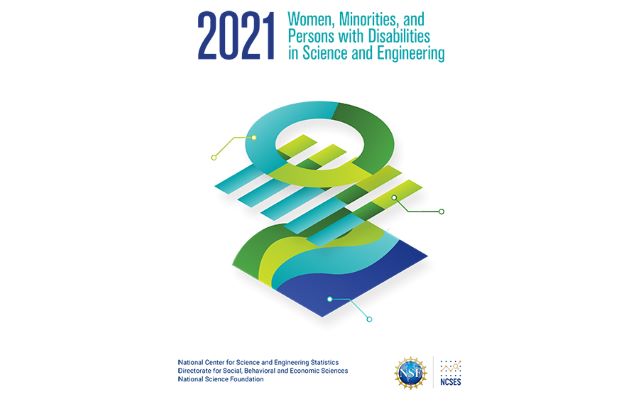Number of S&E degrees awarded to Hispanics increased over the past decade, study finds
The National Center for Science and Engineering Statistics released its 2021 Women, Minorities, and Persons with Disabilities in Science and Engineering report recently. The report focuses on women, persons with disabilities, Black, Hispanic/Latino, and American Indian or Alaska Native. These groups tend to have less representation in science, technology, engineering, and math (STEM) fields than in the U.S. population.
“Ensuring accessibility and inclusivity in STEM is essential to cultivate a robust U.S. science and engineering enterprise,” said National Science Foundation (NSF) Director Sethuraman Panchanathan in a statement. “This report provides useful information that helps us understand where we are and where we need to go. We must continue to work collaboratively for inclusive change that results in a STEM workforce that reflects the population of our nation.”
Key topic areas in the Women, Minorities, and Persons with Disabilities (WMPD) in Science and Engineering report include enrollment, the field of degree, employment status, and occupation, including academic careers.
“We are excited to provide this important resource on the status of women, minorities, and persons with disabilities in STEM,” said Emilda B. Rivers, director of the National Center for Science and Engineering Statistics. “The WMPD report serves to inform policymakers and the science and engineering communities on issues impacting underrepresented groups over time. The report also provides a valuable resource to academic researchers and community leaders to further the discourse on STEM representation.”
Key takeaways
- In 2018, more women than men were enrolled in college, both in 2-year and 4-year institutions. The share of undergraduate students who were Hispanic or Latino increased from 2016 to 2018.
- Although the overall number of S&E graduate students declined between 2016 and 2018, the share of Hispanic or Latino students increased. However, the shares of both American Indian or Alaska Native students remained the same.
- Of all S&E degrees awarded in 2018, women earned about half of bachelor’s degrees, 44.7% of master’s degrees, and 41.2% of doctorate degrees. However, the proportion of degrees awarded to women varied by field—female S&E degree holders were most prevalent in psychology, biological sciences, and agricultural sciences and the least prevalent in computer sciences and engineering.
- Both the share and number of S&E degrees awarded to underrepresented minorities—Hispanics/Latinos, Blacks, and American Indians or Alaska Natives—increased over the past decade.
- In 2018, women from underrepresented minority groups earned more than half of the S&E degrees awarded to their respective racial and ethnic groups at the bachelor’s, master’s, and doctorate levels.
- The unemployment rate is lower overall for scientists and engineers than for the U.S. labor force. Scientists and engineers are individuals with at least a bachelor’s degree and an S&E or S&E-related degree or occupation. However, scientists and engineers with one or more disabilities had an unemployment rate greater than that of the U.S. labor force.
- Scientists and engineers generally have higher salaries when working in S&E occupations than in other occupations. However, female scientists and engineers have lower median salaries than do their male counterparts in most broad occupational groups.
- The share of academic doctoral positions held by women with science, engineering, and health doctoral degrees increased from 26.4% in 1999 to 38.5% in 2019. Underrepresented minorities also hold a larger share of academic positions than they did in 1999, although their share remains small (8.9%) and is considerably lower than their share of the population.
- A larger share of S&E doctorate recipients with disabilities than those without disabilities reported that their primary graduate school funding was personal or family funds, in particular, loans. In addition, a smaller share of those with disabilities received research assistantships, traineeships, or internships, or had fellowships, scholarships, or grants than did those without disabilities.
